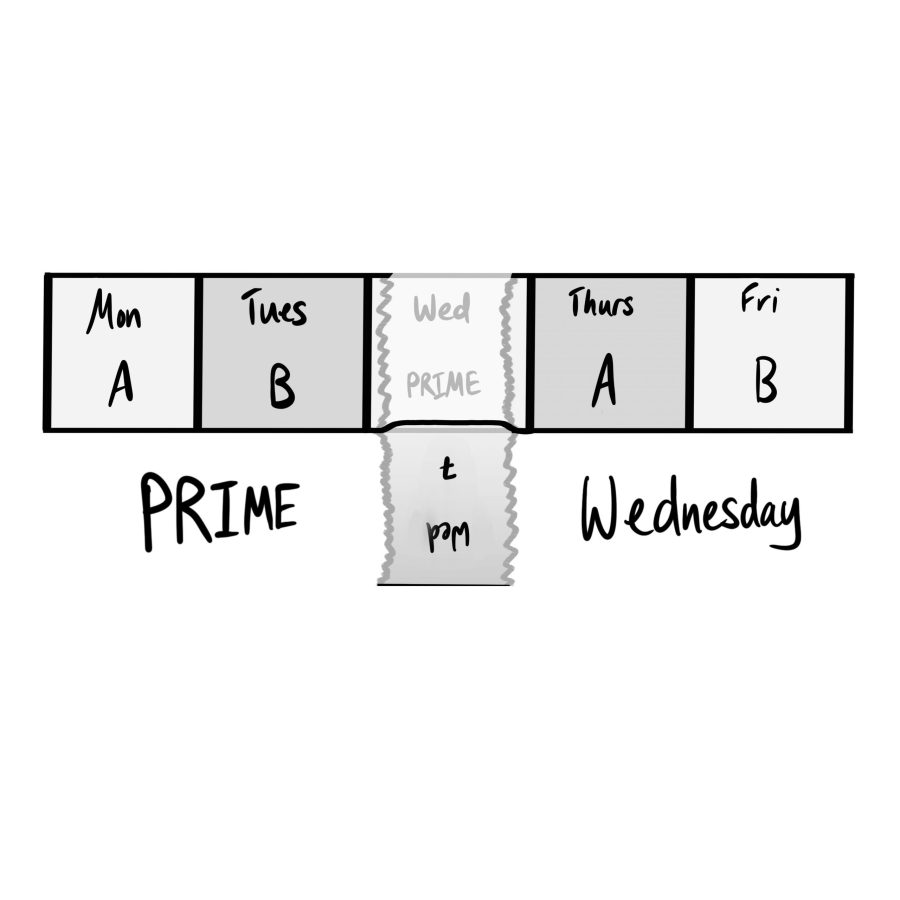With the signing of California’s SB 328 in 2019, middle and high schools were required to change their start times to — at the earliest — 8 a.m. and 8:30 a.m., respectively.
Then, during the 2020-2021 school year, PAUSD changed the Monday bell schedule at its secondary schools from an alternating block day to a 7-period schedule. For many students, this 7-period day quickly became unpopular due to the short, unproductive class periods and the weekend homework load.
Interestingly enough, in 2017, Paly’s Monday bell schedule was a 7-period day, but in 2018 administrators eliminated this 7-period day and replaced it with an alternating even/odd schedule because of complaints about how hectic Mondays became. Sound familiar?
No matter how PAUSD and its Bell Committee design a Monday bell schedule, complaints always follow.
The solution? Think differently and look to science and innovation for the answer. The entrepreneurial/political landscape today shows the clear trend: a four-day work week.
Companies such as Panasonic and Bolt and countries like Scotland and Spain are experimenting with a four-day work week. In the U.S., Rep. Mark Takano (D-California) also wants to reduce the workweek to 32 hours, allowing for four-day work weeks.
As for PAUSD, administrators and the board of education should support the four-day school weeks, specifically with Weekend Wednesdays, where Wednesdays are a rest day in the middle of the week. This would allow for students to regain motivation and boost their productivity to finish off the school week strong. Instead of a five-day marathon of classes, students would experience two-day sprints.
According to the Henley Business School, 64% of employers that offer a four-day workweek say that they have experienced an improvement in productivity, and save $102.6 billion in the process by retaining employees with fewer sick days.
The survey also showed that the thing employees did most often on their day off was to visit friends and family, likely contributing to positive employee mental health.
So, if businesses and countries are experimenting with four-day work weeks, what’s to stop PAUSD from implementing a similar system?
Well, for one thing, having a four-day school week would not be compliant with California’s instructional minute requirement.
However, since a state auditor allows the district to count PRIME as instructional minutes, a more realistic approach for this public school district, regulated by the government, is to implement PRIME Wednesdays, a day-long PRIME that could fulfill the instructional minute requirement.
An argument can be made that the replacement of a seven-period Monday with a PRIME Wednesday would give less time for teachers to teach. However, with the extra PRIME time, teachers could assign homework for the content they would have taught during 45-minute Monday sessions. And with the elimination of 40 total minutes of passing time that currently plagues our Monday schedule, PRIME Wednesdays would also be more efficient due to fewer passing periods (longer class times).
A hybrid Weekend Wednesday could become reality through the implementation of PRIMES on Wednesdays, allowing for asynchronous homework time, while also allowing the students to relax should they need a break.
With a day in the middle of the week where students could take a pause and relax from the onslaught of homework that teachers give during the week, a PRIME Wednesday would help students catch up on homework and have a mental health day. PRIME Wednesdays would also teachers by giving them time to grade and also giving them a mental break, letting everyone be better on block days.
With schedule changes every year, why not implement a modern, innovative schedule that is in use in corporations and has been proven to benefit all?



